United States Army, The
United States military
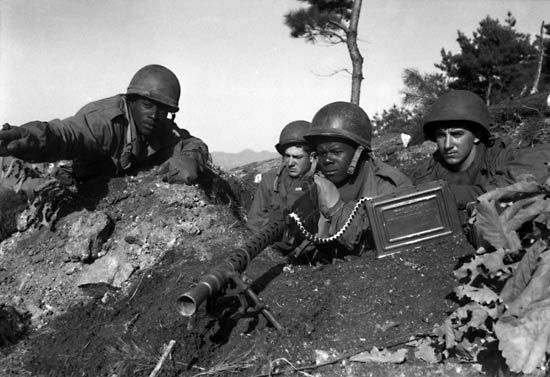
 major branch of the United States armed forces charged with the preservation of peace and security and the defense of the nation. The army furnishes most of the ground forces in the U.S. military organization.
major branch of the United States armed forces charged with the preservation of peace and security and the defense of the nation. The army furnishes most of the ground forces in the U.S. military organization.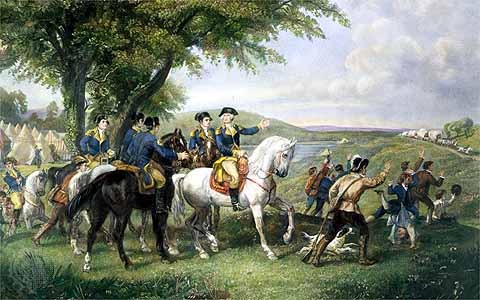 The first regular U.S. fighting force, the Continental Army, was organized by the Second Continental Congress on June 14, 1775, to supplement local militia forces in the imminent American Revolution (1775–83). It was placed under the control of a five-member civilian board, and U.S. military forces have remained in civilian control ever since. The Continental Army had two main types of troops: diverse local militia forces who tended to return home whenever a particular danger was past; and the “Continentals,” a unified standing force whose members enlisted for longer terms and were trained more thoroughly than the militia. The Continentals formed the backbone of the American war effort and were the beginning of a regular United States army.
The first regular U.S. fighting force, the Continental Army, was organized by the Second Continental Congress on June 14, 1775, to supplement local militia forces in the imminent American Revolution (1775–83). It was placed under the control of a five-member civilian board, and U.S. military forces have remained in civilian control ever since. The Continental Army had two main types of troops: diverse local militia forces who tended to return home whenever a particular danger was past; and the “Continentals,” a unified standing force whose members enlisted for longer terms and were trained more thoroughly than the militia. The Continentals formed the backbone of the American war effort and were the beginning of a regular United States army.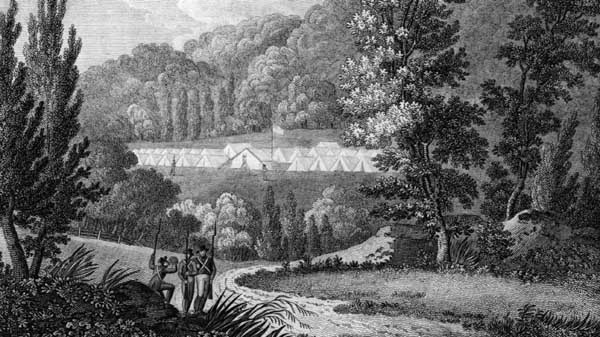
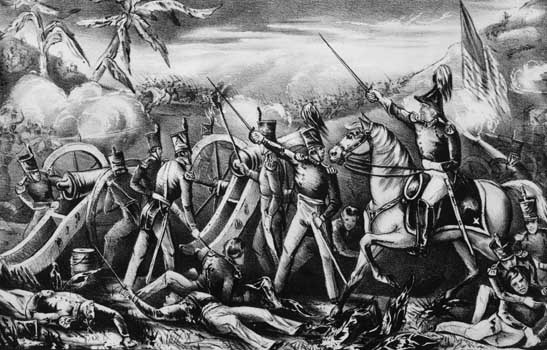 The Continental Army was officially disbanded on November 2, 1783. Thereafter, the size of the U.S. Army increased during times of crisis and decreased during times of peace. The Constitution (1787) placed the military forces under the control of the president as commander in chief, and in 1789 the civilian Department of War was established to administer the military forces. The War of 1812 (1812, War of) clearly demonstrated the inadequacy of the militia, which were used in large numbers to supplement regular army troops. The 60,000 American troops who served in the regular army did most of the fighting against the British, while few of the nearly 460,000 American militiamen who were under arms saw battle at all, and those who did proved undependable. Consequently, the army had virtually abandoned the militia concept by the time of the Mexican War (Mexican-American War) (1846–48), which was fought almost solely by regulars and an additional force of volunteers.
The Continental Army was officially disbanded on November 2, 1783. Thereafter, the size of the U.S. Army increased during times of crisis and decreased during times of peace. The Constitution (1787) placed the military forces under the control of the president as commander in chief, and in 1789 the civilian Department of War was established to administer the military forces. The War of 1812 (1812, War of) clearly demonstrated the inadequacy of the militia, which were used in large numbers to supplement regular army troops. The 60,000 American troops who served in the regular army did most of the fighting against the British, while few of the nearly 460,000 American militiamen who were under arms saw battle at all, and those who did proved undependable. Consequently, the army had virtually abandoned the militia concept by the time of the Mexican War (Mexican-American War) (1846–48), which was fought almost solely by regulars and an additional force of volunteers. The U.S. Army underwent an enormous expansion during the Civil War (American Civil War) (1861–65), growing from a peacetime strength of about 16,000 officers and men in December 1860 to a maximum size of 1,000,000 by 1865. The Confederate army may have reached a strength of 500,000 men at its height. Both sides initially relied on voluntary enlistments, but both had eventually to resort to conscription to maintain their vast armies in the field. As usual, rapid demobilization followed the Civil War, and by 1875 the U.S. Army had shrunk to a size of about 25,000 troops.
The U.S. Army underwent an enormous expansion during the Civil War (American Civil War) (1861–65), growing from a peacetime strength of about 16,000 officers and men in December 1860 to a maximum size of 1,000,000 by 1865. The Confederate army may have reached a strength of 500,000 men at its height. Both sides initially relied on voluntary enlistments, but both had eventually to resort to conscription to maintain their vast armies in the field. As usual, rapid demobilization followed the Civil War, and by 1875 the U.S. Army had shrunk to a size of about 25,000 troops.In the Spanish-American War (1898), the army was again augmented by volunteers. This mobilization revealed various inefficiencies in the War Department, which Elihu Root (Root, Elihu) set himself to correct after becoming secretary of war in 1899. Root reorganized and revitalized the War Department, establishing an army general staff (1903) and an extensive system of postgraduate education for the officer corps. When the United States entered World War I in 1917, the army was better prepared than at any time in its history. During the war it expanded in 18 months to a force of 3,685,000 officers and men, about three-quarters of whom were conscripted under the Selective Service Act of May 18, 1917. About 2,000,000 men were sent to France to serve in General John J. Pershing (Pershing, John J)'s American Expeditionary Force.
After World War I the army experienced its usual postwar contraction; for most of the period from 1919 to 1939, the army's strength was about 125,000 men, the smallest by far of all the Great Powers. After Nazi Germany successfully invaded France in May 1940, however, the U.S. government reinstituted conscription, thereby raising the army's strength to 1,640,000 by the time the Japanese attacked Pearl Harbor (Pearl Harbor attack) on December 7, 1941. With the United States's entry into the war, the army went through a further process of expansion, this time to 8,300,000 officers and men, of whom about 5,000,000 saw service overseas. Unlike the situation in World War I, where the army had served primarily in France, in World War II it fought all over the globe—in North Africa, the Mediterranean, Western Europe, across the Pacific Ocean, and in parts of mainland Asia. During the war the army was reorganized into three main commands: the Army Ground Forces, the Army Air Forces, and the Army Service Forces. Overall responsibility for handling an armed force of such unprecedented magnitude and complexity lay with General George C. Marshall (Marshall, George Catlett), who served as army chief of staff for the entire duration of the war.
With Japan's surrender in August 1945, public pressure caused an immediate and hasty demobilization of the army despite its occupation responsibilities in Germany, Austria, Japan, and Korea. The army had declined to a strength of 554,000 troops by March 1948. The advent of the Cold War, however, soon stimulated efforts to restore military effectiveness, and the peacetime conscription established in 1940 was reinstituted in 1948 and periodically renewed thereafter. In 1947 the Army Air Forces was split off to become an independent U.S. Air Force, and in 1949 the army itself became one of three component services in the newly created Department of Defense.
The outbreak of the Korean War in 1950 occasioned another expansion of the army, this time to 1,500,000 officers and men by 1951. But even after the Korean War ended in 1953, the army maintained peacetime levels of strength that were unprecedented in the nation's history. In 1960, for example, army strength totaled 860,000 officers and men. The need for such a large standing army is explained by the United States's leadership role in the Cold War and its need to maintain substantial armed forces in readiness in Western Europe in case of a Soviet invasion. Army strength increased again, to about 1,460,000 troops, at the height of the Vietnam War in the late 1960s. With the completion of the U.S. withdrawal from Vietnam in 1973, the peacetime draft was ended, and the army was returned to volunteer status. At the beginning of the 21st century the active duty troop strength stood at about 600,000.
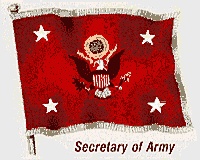 The current administrative structure of the U.S. Army was established by the National Security Act of 1947 and amendments to it in 1949. The Department of the Army is organized as a military section of the Department of Defense. It is headed by the Office of the Secretary of the Army. The Army Staff gives advice and assistance to the secretary and administers civil functions, including the civil works program of the Corps of Engineers.
The current administrative structure of the U.S. Army was established by the National Security Act of 1947 and amendments to it in 1949. The Department of the Army is organized as a military section of the Department of Defense. It is headed by the Office of the Secretary of the Army. The Army Staff gives advice and assistance to the secretary and administers civil functions, including the civil works program of the Corps of Engineers. The major army field commands are: Forces Command, which is responsible for all army forces in the continental United States, the Army Reserve, and the Army National Guard; Training and Doctrine Command; Materiel Command, which is responsible for supply logistics and research, development, and evaluation of new materiel; Intelligence and Security Command; Medical Command; Criminal Investigation Command; Corps of Engineers, which oversees a variety of military and civil development projects; Special Operations Command; Military Traffic Management Command; Military District of Washington, which is charged with defense of the national capital; the Space and Missile Defense Command; U.S. Army Europe; U.S. Army Pacific; Eighth Army (stationed in South Korea); and U.S. Army South. The army also administers the U.S. Military Academy at West Point, New York.
The major army field commands are: Forces Command, which is responsible for all army forces in the continental United States, the Army Reserve, and the Army National Guard; Training and Doctrine Command; Materiel Command, which is responsible for supply logistics and research, development, and evaluation of new materiel; Intelligence and Security Command; Medical Command; Criminal Investigation Command; Corps of Engineers, which oversees a variety of military and civil development projects; Special Operations Command; Military Traffic Management Command; Military District of Washington, which is charged with defense of the national capital; the Space and Missile Defense Command; U.S. Army Europe; U.S. Army Pacific; Eighth Army (stationed in South Korea); and U.S. Army South. The army also administers the U.S. Military Academy at West Point, New York.Besides its purely military functions, the army also administers federal programs of environmental protection and development; provides military assistance to federal, state, and local governmental agencies; assists in times of natural disaster; and provides emergency medical air transportation.
- Absalon
- Absalon Pederssøn Beyer
- Absaroka Range
- abscess
- Abse, Dannie
- absentee ownership
- absentee voting
- Abs, Hermann J.
- absinthe
- Absolute Idealism
- Absolutely Fabulous
- absolute temperature scale
- absolute value
- absolute zero
- absolution
- absolutism
- absorption
- Absorption coefficients of common materials at several frequencies
- absorption edge
- Abstbessingen faience
- abstract art
- Abstract Expressionism
- Abstraction-Création
- abstract poem
- Absurd, Theatre of the